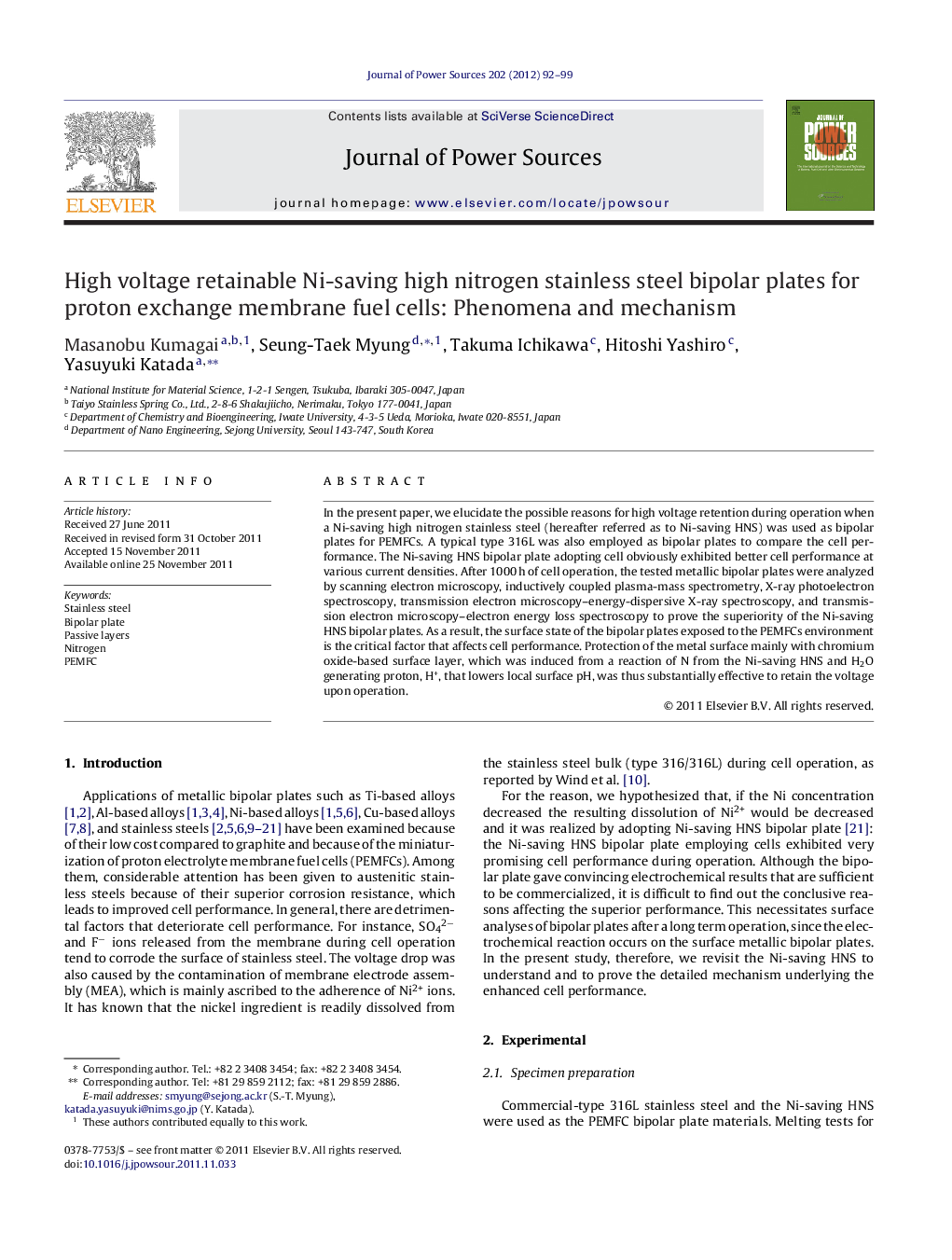| Article ID | Journal | Published Year | Pages | File Type |
|---|---|---|---|---|
| 1288545 | Journal of Power Sources | 2012 | 8 Pages |
In the present paper, we elucidate the possible reasons for high voltage retention during operation when a Ni-saving high nitrogen stainless steel (hereafter referred as to Ni-saving HNS) was used as bipolar plates for PEMFCs. A typical type 316L was also employed as bipolar plates to compare the cell performance. The Ni-saving HNS bipolar plate adopting cell obviously exhibited better cell performance at various current densities. After 1000 h of cell operation, the tested metallic bipolar plates were analyzed by scanning electron microscopy, inductively coupled plasma-mass spectrometry, X-ray photoelectron spectroscopy, transmission electron microscopy–energy-dispersive X-ray spectroscopy, and transmission electron microscopy–electron energy loss spectroscopy to prove the superiority of the Ni-saving HNS bipolar plates. As a result, the surface state of the bipolar plates exposed to the PEMFCs environment is the critical factor that affects cell performance. Protection of the metal surface mainly with chromium oxide-based surface layer, which was induced from a reaction of N from the Ni-saving HNS and H2O generating proton, H+, that lowers local surface pH, was thus substantially effective to retain the voltage upon operation.
► Included nitrogen in the high nitrogen stainless steel is released to the interfacial solution. ► Nitrogen subsequently induces protons by reacting with water on the passive layer. ► This causes lowering of the local surface pH of the passive layer. ► This leads to formation of the chromium oxide-enriched passive layer, improving cell performance.
